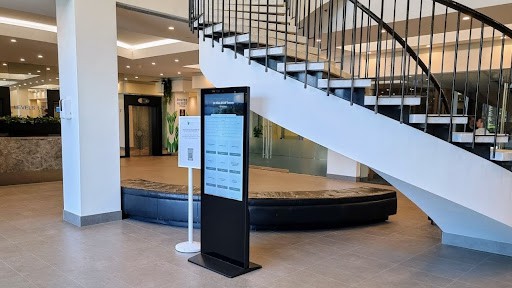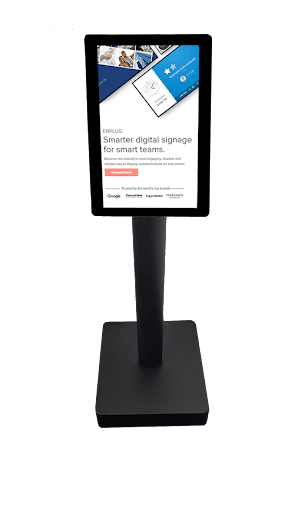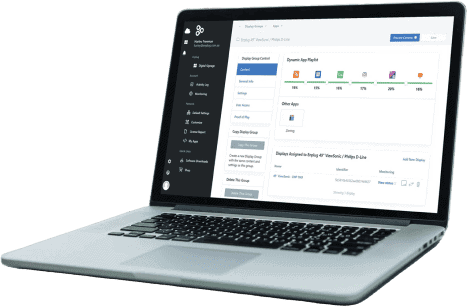
Top Tips On How To Design The Perfect Touch Screen Kiosk Interface
As technology improves around us daily, we are constantly being presented with new and innovative ways to reach our customers and connect with them on a whole new engaging and meaningful level. It’s both exciting and, at times, daunting. Keeping up to date with the latest technology can be exhausting to say the least, as you need to ensure your business is utilising the technology in the right way to get the best results possible. Touch screen kiosks are one of those amazing inventions that are bringing your customers even closer to you and your business – and it’s much easier than you think. Here are 5 great tips on how to design the perfect touch screen kiosk interface.
1. Keep it simple
You want to cater to the masses in order to reach as many customers as possible through your touch screen interactive kiosk. If you make it too difficult to navigate, people are going to drop off before they’ve even had the chance to properly engage with your business. By keeping things simple, you can appeal to a much wider audience. If your customers find it easy to navigate and make their way around the touch screen kiosk display, then you have a greater opportunity to communicate with a variety of customers.

2. Keep it plain
While simple navigation is great, you also want to ensure the screen is nice and plain as well. If people walk over to interact and are confronted with too many options, they’re going to find themselves confused and walking away. By keeping your screen as clean and clutter free as possible, with just a glance, your customers will be able to navigate their way through what they are looking for and get the desired information from the kiosk LCD touch screen.
The touch screen kiosk interface design is better off being made up of lots of navigational layers that customers can progress their way through. This helps avoid having too much information on the one page, distracting the customer from finding the information they actually want. Instead, they can click on their area of interest and get navigated to the next page with more options for them to navigate through once again. It’s much easier to process the information this way.

3. Keep it user friendly
One important thing to note is that many people aren’t used to touchscreens. We are used to having a mouse or keyboard on hand, or in lieu of that, being on a small device that we can hold up close to navigate our way around. A free-standing touch screen kiosk is a relatively new concept for many customers, so the idea is to make the experience as user-friendly as possible.
On a touch screen kiosk, this all comes down to the buttons. In order to interact with the kiosk, users need to be able to press buttons to navigate their way through the information to find what they are looking for. This means, if the buttons are too small, not pronounced enough, too hard to read, not responsive enough and so on, customers are going to get lost on the journey and give up.
It all comes down to design. Make it uniform across all your kiosks and all the different navigational pages on your kiosks. If your buttons are first and foremost easy to recognise for what they are (buttons!) and the same on every page, your customer will have no problem clicking their way through.
4. Think about the lighting
This is one area that many businesses don’t put a lot of thought towards when they set up a touch-screen kiosk. The fact is, if the lighting isn’t right, customers won’t even be able to read what’s on the screen – let alone navigate their way through it.
This is especially a problem if you’re setting your kiosk up outside.
What can be done? Work out where your kiosk is going and check out the lighting. You can then make the adjustments on colour, contrast and tone on your kiosk, to ensure it’s easy to read in the conditions.
5. Get to the point
Finally, and probably most importantly, get to the point. People interact with a touch screen kiosk for one reason: they want certain information. If you ask open-ended questions or navigate customers too far from their intended goal, they aren’t going to preserve.
You need to be clear in your communication and help people reach the information they need as quickly as possible. Let’s face it, our attention spans don’t allow for a wild goose chase. Keep it short, keep it sharp and get to the point.

Setting up your touchscreen kiosk
At the end of the day, a touch screen kiosk is a brilliant investment for your business, that offers up a whole new level of interaction with your customers. By putting in the time and effort to ensure your kiosk is set up properly, you can sit back and reap all the rewards that come with it. Short term pain for some very, very long-term gain. It’s definitely worth it in our books!
